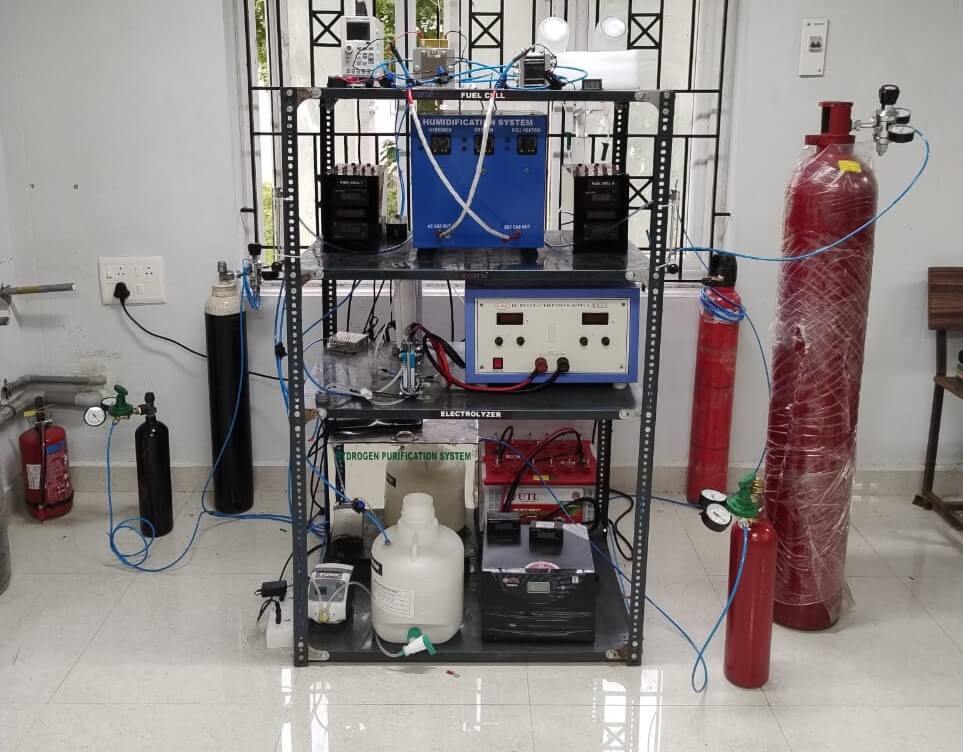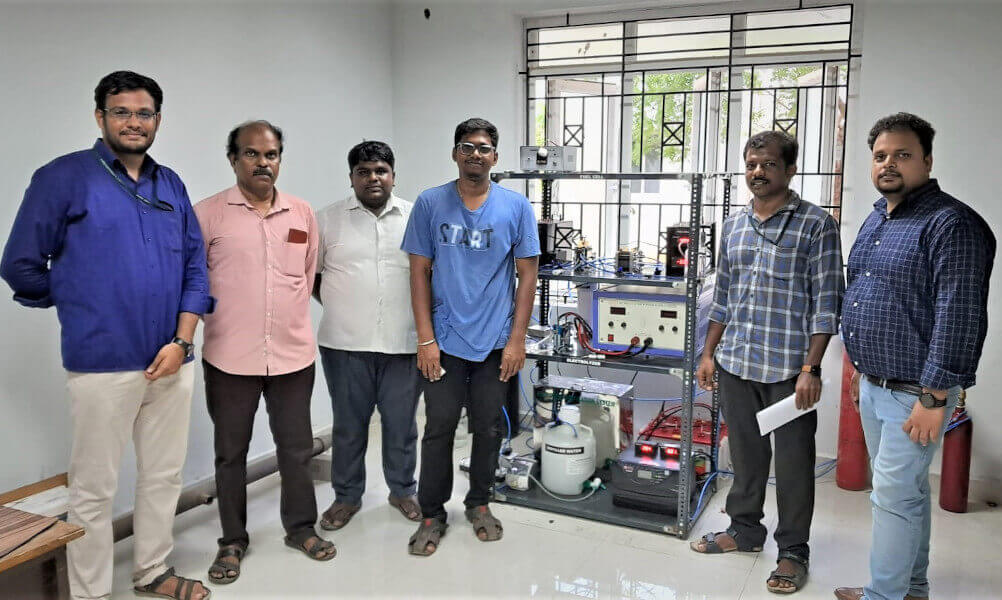Green Hydrogen Generation and Storage System consist of
essential components:
- Water Distiller: for water purification
- Peristaltic Pump: to ensure optimum pressure and flow
rate for electrolyzer
- DC Power Supply powered by Solar Panels : for
supplying power to electrolyzer
- PEM Electrolyzer: for splitting distilled water into
hydrogen and oxygen
- Water separators: for separating water from generated
gases
- Hydrogen dryer: for removing moisture from generated
hydrogen gas
- Humidifier: for humidifying hydrogen and oxygen gas to
be sent to fuel cell
- Fuel Cell: for generating electricity from hydrogen
and oxygen gases
- Electronic load: for loading and testing fuel cell
- Measurement
Devices: Rotameters, Pressure Gauges etc.
- Cylinders for
storing and supplying gas
In an electrolyser cell, the
electrical energy that is being provided from an external source is used to
split the deionized water (or distilled water) to generate hydrogen and oxygen
gases. In other words, electrical energy is being converted into chemical
energy with the aid of the electrolyser cell. This electrochemical reaction is
also known as electrolysis. In the electrolyser cell, the electrochemical
reactions are carried out on the catalyst located at the anode and cathode. In
PEM electrolyzers, anode and cathode catalysts are usually applied directly to
the surface of the membrane. Sometimes, only the anode electrode catalyst is
applied to the membrane surface and cathode catalyst is applied to the surface
of the gas diffusion layer. An example for anode catalyst is iridium ruthenium
oxide or iridium black. An example of cathode catalyst is platinum black or
platinum on carbon. As the name suggest, PEM electrolyzers utilize a proton
(H+) exchange membrane (such as Nafion). In addition to these components, a
metallic diffusion medium is used at the anode side to evenly disperse the
liquid water, vent out the generated gases, and provide electrical contact. At
the cathode, on the other hand, a carbon- based gas diffusion layer is used to
vent out the hydrogen gas and also provide electrical contact. The combination
membrane-catalysts-diffusion media forms the heart of the PEM electrolyser
cell. The following reactions take place within the PEM electrolyser system:

In a fuel cell, chemical energy is converted directly into
electrical energy (i.e., without use of combustion process). Hydrogen and
oxygen supplied from outside the process react to form water, generating
electrical current and heat in the process. The oxygen can be supplied in pure
form, or in the form of air. The membrane-electrode unit forms the heart of the
PEM fuel cell. The following reactions take place within it:

The hydrogen gas supplied to the anode is oxidized. Under the
catalytic action of the electrode (e.g., platinum), it is broken down into
protons and electrons. The H+ ions migrate through the proton-conductive
membrane to the cathode side. If an external electric circuit is provided to
the cathode, the electrons travel to the cathode, performing electrical work in
the process. The oxygen supplied to the cathode is reduced, combining with the
protons to form water.


